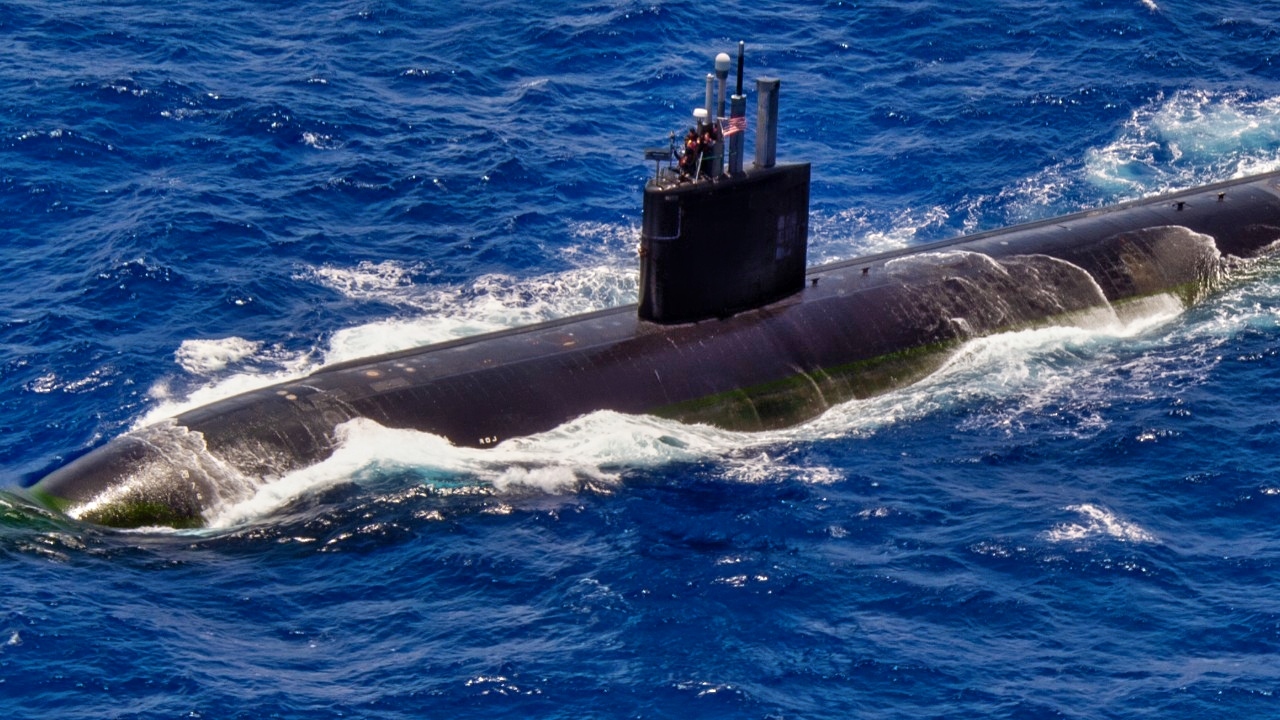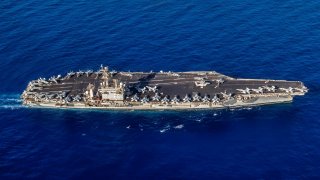Could the U.S. Navy Get Rid of the Aircraft Carrier?
Despite significant investments in the world's finest aircraft carrier fleet, advancements in submarine and missile technology are rendering these vessels increasingly vulnerable. An exercise demonstrated a French submarine's ability to strike a US carrier, highlighting this vulnerability.
Summary and Key Points You Need to Know: Concerns are growing over the survivability of American aircraft carriers in a potential conflict with China, given advancements in submarine and missile technology.
-While carriers have been central to U.S. naval strategy for decades, their vulnerability is increasing, particularly in the Indo-Pacific region.
-Some experts suggest shifting focus towards a strategy that emphasizes a larger submarine fleet and smaller, more agile surface vessels.
-This approach could offer cost savings, enhanced flexibility, and reduced risk of catastrophic losses, though it would sacrifice the carrier’s unparalleled ability to project airpower globally.
Are U.S. Aircraft Carriers Still Viable in a War with China? Experts Weigh In
Some pundits are concerned about the ability of American aircraft carriers to survive a war against China. Yet, not only have vast resources already been invested in the world’s finest aircraft carrier fleet, but the American global strategy is dependent upon the deployment of forces, on a moment’s notice, upon that aircraft carrier fleet.
Is American dependency upon aircraft carriers misaligned with the needs of a conflict with China? And if so, what should the Americans do about it.
Concerns over the Aircraft Carrier’s Survivability
The aircraft carrier has been the seminal vessel of the world’s most consequential navy for about the last eighty years. A floating city, capable of projecting airpower around the world, the aircraft carrier offers a unique capability, which expands the footprint of the deploying navy exponentially. But technology is catching up. Submarines are becoming more sophisticated, more capable of slipping through the defensive line of support vessels that are deployed to guard the aircraft carrier.
For example, during a war game exercise involving US and French forces, the French Rubis-class submarine slipped past Carrier Strike Group 12 and landed a (mock) fatal blow against the USS Theodore Roosevelt, demonstrating that the mighty aircraft carrier is indeed fallible. Similarly, surface vessels are becoming more agile, lither, complicating defense scenarios. China enjoys a pronounced gap over the US with respect to intermediate missiles. And hypersonic missiles are emerging – a threat so new and lethal that the Americans are still scrambling to develop a countermeasure.
The point being the aircraft carrier is more vulnerable than ever before. Are aircraft carriers fully obsolete? In most conflicts, no. The US can likely deploy their supercarriers through most of the world without much fear of consequence. Well, that may be changing: the Houthi rebels in Yemen deployed antiship missiles in late 2023, inspiring trepidation from the exponentially-better-funded US Navy.

And that’s the Middle East, with low-budget actors. The Indo-Pacific may be a different story, with more sophisticated actors; in the Indo-Pacific, the US may have reason for acute concern. And that’s not to say that an aircraft carrier could not survive a conflict against China. Many pundits would argue that the carrier is still sufficiently equipped to survive. But the margin for error appears to be tightening – leading some to wonder whether alternative naval schemes are overdue.
Alternatives to the Aircraft Carrier
Aircraft carriers are extremely large and extremely expensive. America’s newest carrier, the Gerald R. Ford, cost $13.3 billion – and will require millions upon millions to maintain and staff annually. And with over 1,000 feet of length, American supercarriers make an impressive target, measuring about one fifth of a mile long. That’s a big target. A big, slow target that, if damaged or destroyed, would represent billions of dollars lost.
So, what does an alternative scheme look like? National Interest contributor Brandon Weichert has argued for “a refocus of US strategy to enhance and expand America’s submarine fleet” with a complement of “smaller, more maneuverable, and harder-to-destroy surface warships.”
The refocus on submarines and surface vessels would diffuse American firepower across multiple vessels. The advantage here would be cost-reduction, improved offensive flexibility, and harder-to-kill targets. The downside would be the loss of the ability to deploy an airbase’s worth of fighter and bomber aircraft from any shoreline in the world.
About the Author: Harrison Kass
Harrison Kass is a defense and national security writer with over 1,000 total pieces on issues involving global affairs. An attorney, pilot, guitarist, and minor pro hockey player, Harrison joined the US Air Force as a Pilot Trainee but was medically discharged. Harrison holds a BA from Lake Forest College, a JD from the University of Oregon, and an MA from New York University. Harrison listens to Dokken.
All images are Creative Commons.


